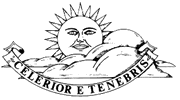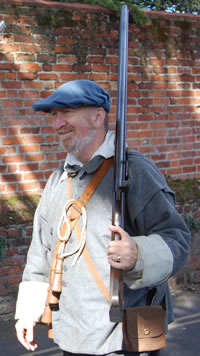Our History
John Bright's regiment was raised in Sheffield in 1643. Bright having previously raised and commanded a troop of cavalry. The Foot regiment would last beyond the restoration of Charles II.
Although not formally part of the New Model Army, Bright and his regiment were prestigious enough to warrant comment from the better known characters of the period. Piecing a history of the regiment together has proved difficult because of the length of service, and one fears, a coverup of the units actual movements at the restoration.
One main source stands out, "The memoirs of Captain John Hodgson" is a rip roaring blast through the Civil War in the North of England, but how long Hodgson was with the regiment is not clear.
The early history of Bright's is not known. It is almost certain the regiment was not at the defeat at Adwalton Moor and was possibly being raised at this time as there is no mention of Bright himself being at the battle . Our first knowledge of the regiment in battle is at Nantwich (where Hodgson joined). The army, with John Bright under the command of Major-General Lambert, then marched from Cheshire into Yorkshire to operate in the West Riding. They moved through Sowerby, Halifax and Keighley to Bradford where they were surprised by the forces of Colonel Bellasis. Bright's, along with the rest of the infantry, appear to have given a good account of themselves. Fairfax then retreated to Selby, where Bellasis was brought to battle and heavily defeated.
The army next moved to York where it linked up with Manchester's army and the Scots. What followed was the Battle of Marston Moor. Bright's almost certainly served in the centre of the Parliamentarian army with Lord Fairfax's foot. Little is known of how they performed, Hodgson is silent on the battle, but they are not noted as having routed as did other units of Fairfax's army.
Following the fall of York Bright's probably accompanied their colonel in the recapture of Sheffield and its castle. The regiment then marched to Pontefract to engage in the siege. In March 1645 Langdale relieved the siege by attacking and driving off the besieging forces. Bright's acted as a rearguard to allow the army to escape. Eventually, attacked on both sides, they broke, losing many men. The regiment was forced to return to garrison duty to recover and thus it ended the First Civil war.
The regiment was quickly involved in the second war. Joining the New Model Army, it was soon campaigning in North Yorkshire, again under Lambert. In July 1648 Bright's were involved in the capture of Appleby Castle but were forced to fall back onto the Yorkshire border as the Scots advanced to join Langdale. The Army, now under Cromwell, fell upon the royalists at Preston where Bright's won praise from the General;
"There came no bands of your foot to fight that day but did it with incredible valour and resolution; among which Colonel Bright's, my Lord General's, Lt-Colonel Read's and Colonel Ashton's had the greatest work they often coming to push of pike and to close firing, always making the enemy to recoil. And indeed I must needs say, God was as much seen in the valour of the Officers and soldiers of these before mentioned as in any other action that hath been performed."
The army then pursued the Scots, first to Berwick and then Edinburgh. Upon the successful conclusion of the campaign Bright's returned to besiege Pontefract once more until its fall in March 1649. The regiment then went into garrison at Hull
In 1650 parliament organised a "Marching army in the field" to advance into Scotland, which was to include Bright's. As the army was forming Bright himself gave in his commission. The Regiment was offered Monck as a commander. Once a royalist Monck, having been captured (possibly by Bright's) at Nantwich, had changed sides. The regiment would have none of him but accepted Lambert as their commander the following day.
The army now marched on what was to become the Dunbar Campaign. The regiment were involved in the battles at Dunbar and Inverkeithing as well as the capture of Perth before the army marched in pursuit of the Scots army invading England. The Scots were caught at Worcester in 1651.
The regiment was confined to garrison duties for most of the Interregnum. In 1657 Lambert quarrelled with Cromwell and was dismissed the regiment passed to Major-General Fleetwood.
Cromwell died in 1658, and the following year Lambert was restored as regimental commander. In August of that year the regiment was involved in the suppression of George Booth's rebellion. Lambert was then cashiered by Parliament who feared another military coup. Lambert and the regiment marched on London, preventing Parliament from sitting. However, Monck marched to Parliament's aid and Lambert was arrested. The regiment passing to Eyres and then Birch. Distrusted by Monck they were dispersed around Kent until the Restoration.
Bright's (or Birch's now) were finally disbanded on 15th October 1660, one of the longest serving regiments of the Civil War period.


